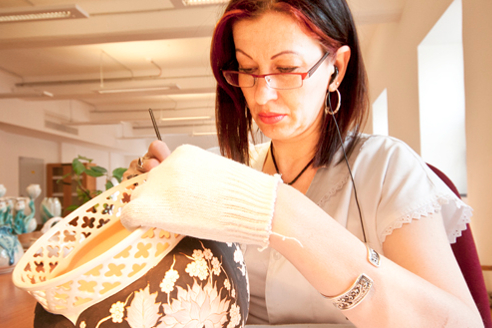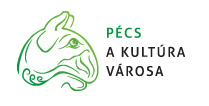THE LIVE MANUFACTURE

The Zsolnay Live Manufacture – porcelain in the making is the special venue of the Zsolnay Cultural Quarter where visitors can witness the more than 150-year-old production processes of the Zsolnay Factory
THE LIVE MANUFACTURE
History of eosin production
The history of eosin production reaches back to the distant past with the production of reduction lustre; a Persian process used in glass production as its fundaments. In the last decades of 19th century it received some spotlight again; Lajos Petrik principal of the Budapest Industrial School and Vince Wartha professor of the Budapest University of Technology and Economics started successfully experimenting with reduction glazes again. Vilmos Zsolnay used the results of these experiments to develop the technology further. The firing process and the development of the multicolourful glazing are attached to his name. The technique received the name ’eosin’ that comes from the Greek ’eos’ (dawn) probably because the first successful pieces had a light red colour resembling that of the early morning sunshine.
Producing raw materials
The production of the eosin items is carried out by using a special technology. Accordingly, the majority of the used materials are produced within the manufacture. The three most important raw materials in use:
- moulding compounds – its main building elements are the kaolin, different types of clay and sand and the special mix of which give its base
- glaze frit – this is a mix of 15–20 different types of clay that gets ground to the desired grain size in the manufacture
- eosin paint – is recipe is unique and its production is carried out on the site. It is ready to adapt to the special final firing process.
It is during the raw production that the item gets its final form and that the designated items get their perforations – that is when the walls of an item coming form the mould get perforated by sharp knives that results in a lace–like smooth surface.
Main stages of raw material production
Glazing, firing
The product, depending on its form goes through two or three firing, and one glazing process until it reaches its final, base glazed stage ready for painting. The main goal of the firing processes is to establish the item’s firmness. Firing processes:
- first firing – a process that is used – along with an inside glazing technique to prevent the item from letting the fluids out – with the tubby items
- firing on a tile – the raw or first fired items get fired on a tile first where it gets its final firmness
- glazing – the item that has been fired on a tile gets the first base glaze the process of which is always carried out by a spray gun using compressed air
- base glaze firing – the spray–painted items are fired again the result of which is the "base glaze" named half ready item
Drawing the final patterns of the items. This step takes places by hand until nowadays. The secret lies in the composition of the paint, that is how the brownish paint turns into all kinds of other colours during firing, and what is even more, how they can get the special metallic look by an iridescent effect.
Reduction firing, wash–off
The Zsolnay live manufacture – porcelain in the making is the special venue of the Zsolnay Cultural Quarter where the visitors can see the more than 150 year old production processes, popular motifs and products of the Europe famous porcelain manufacture: the raw materials, the secrets of painting, drawing the final patterns or applying the eosin paints.
















